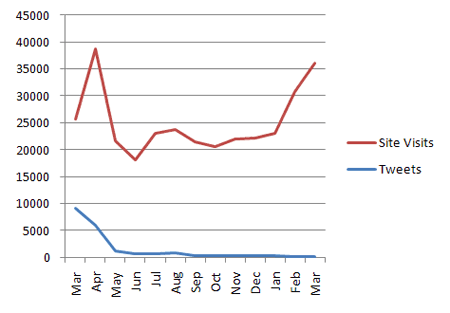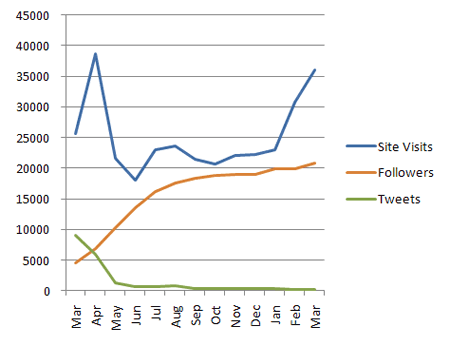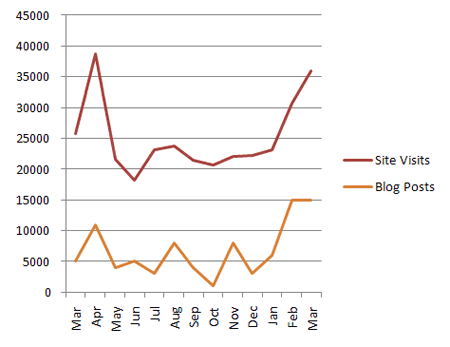
I am going to give you a chance to win cash and prizes and also gain free exposure to a lot of people. Since my blog is about Internet marketing, this is both an online contest and also an article to help people think about how to better market their business. This way, you can still gain a lot of value from it, even if you do not win the contest. Yes, you still win, even if you do not “win”. While I give you the rules I will provide tips to run your own contest. Each “Online Contest Tip” below will outline this particular contest.
I hope you will enjoy this. I look forward to rewarding some very excited winners.
Online Contest Tip: Defined Timeframe
A contest should have a defined timeframe so that participants know when to expect their winnings. This contest will run from April 5th to April 20th 2010 and winners will be announced by the last day of April.
Online Contest Tip: Easy to Participate
This is a contest for the best online contest ideas but you do not need to submit a contest idea to win! I am going to give you multiple easy ways to participate and win. You do not even have to fill out a registration form or sign up for anything!
Online Contest Tip: Make it Relevant
Since prizes are a huge piece of any contest, they should be relevant to the contest promoters’ business model. For example, if you have a fishing store, you may want to give away fishing poles, but you probably do not want to give away knitting needles. It should be relevant to your industry.
As an Internet marketing guy, I help people to make their business more successful online. So, when I decided to hold a contest, I determined that it should be relevant to people seeking more success in their business. This is why I am providing ways for you to achieve more exposure.
Online Contest Tip: The Prizes
The best contests will provide value for the contest promoter as well as the participants. Nobody loses, and somebody gets a great feeling of winning along with some cool free stuff, like money! Here are the prizes of this particular contest:
- Cash Prize – The first place winner will receive ten percent of any new marketing contract that I accept during the contest period, referred as a result of the Online Contest Contest, plus ten percent residuals for the first 12 months from any contingency contract. Note that I do not sell $.95 knitting needles, and this could be big.
- Win a Blog – The first and second place winners will each receive a custom WordPress blog setup including ten hours of customization and SEO services, or equivalent redesign services.
- Business Exposure – Gain more exposure to your business! Each winner will receive spotlighted exposure in a blog post here at aWebGuy.com in a winner’s announcement, plus all participants will receive recognition in the comments and reactions on this blog post. This can add up.
- Brain Food – Top ten participants will win a copy of “Twitter for Business: Twitter for Friends“.
Online Contest Tip: Let People Win
If you run a contest, try not to exclude people. You should make it easy to join in and win. In this case, I am making it really simple to participate. Since my blog will add social media reactions in the comments, it will be really easy for you to show your participation and gain exposure, too.
Everything that appears in the “Comments and Reactions” for this blog post will have a chance to win. For example, my blog is set to include social media “reactions” from FriendFeed, Twitter, Digg, Reddit, Hacker News, Blogger, WordPress, YouTube, Vimeo, Picasa, Flickr, TypePad, Movable Type, BackType, UberVU, and other services. These are just the services that are set up to automatically appear in the comments and reactions. You can also add comments directly. Remember, everything that shows up has a chance to win!
Online Contest Tip: Make the Rules Easy to Understand
If it is easy to understand, it becomes easier to win. In this case, I am using a point system. Winners will be determined based on a simple points system, and can choose how to get more points. Some of these are really easy! Here is how to get points:
- 250+ Points (New Contract): I will award two hundred fifty points to the referrer for each new client who contracts my SEO and social media marketing services during the contest period from April 5th to April 20th 2010. That is 250 points per new contract, and it adds to the cash prize, so don’t be shy! They simply must express that they heard about it from you.
- 100+ Points (Contest Ideas): If you submit the Contest Idea that receives the most “likes” (note the “like” button beside each comment) you will receive one hundred points plus five points for each “like”. You surely have friends to help you, right?
- 100+ Points (Blog Points): If you blog about this contest with a link back to it, you will receive one hundred points for the blog post (or other website) plus one point for every 10 unique visitors linked directly to this page coming from your blog / website during the contest period as verified through a Clicky Web Analytics referrer report. I suggest adding a comment here on this blog to claim your article. I will also provide a “dofollow” link back to your post.
- 50+ Points (Comment Points): If your individual comment here on the contest page other than a Contest Idea receives the most “likes” (note the “like” button beside each comment) you will receive fifty points plus five points for each “like”.
- 50-550 Points (Digg Points): If you Digg this article and include a Digg comment, you will receive 50 points. If the article reaches the front page of Digg.com, each person who diggs the article will be awarded an additional 500 points.
- 25-45 Points Daily (Twitter Points): If you send a tweet, you will receive 25 points, and if it is retweeted, you will receive an additional 2 points for each verifiable retweet up to a total of ten (for a possible 45 points per day). Twitter points will be calculated based on tweets which appear at TweetMeme.com.
- 25+ Points Daily (FriendFeed, Reddit, Blogger, WordPress, YouTube, Vimeo, Picasa, Flickr, TypePad, Movable Type) Reactions aggregated and appearing on this blog post as reported by BackType and UberVU across these listed social media sites will be awarded 25 points each, with a limit of 25 points per network per day.
Online Contest Rules: The Fine Print
Every contest needs some rules, but the fine print should be easy to understand. In the case of this contest, I have tried to make it as easy as possible to understand, and to win. See the Contest Contest Official Rules.
Be sure to subscribe to receive updates!





